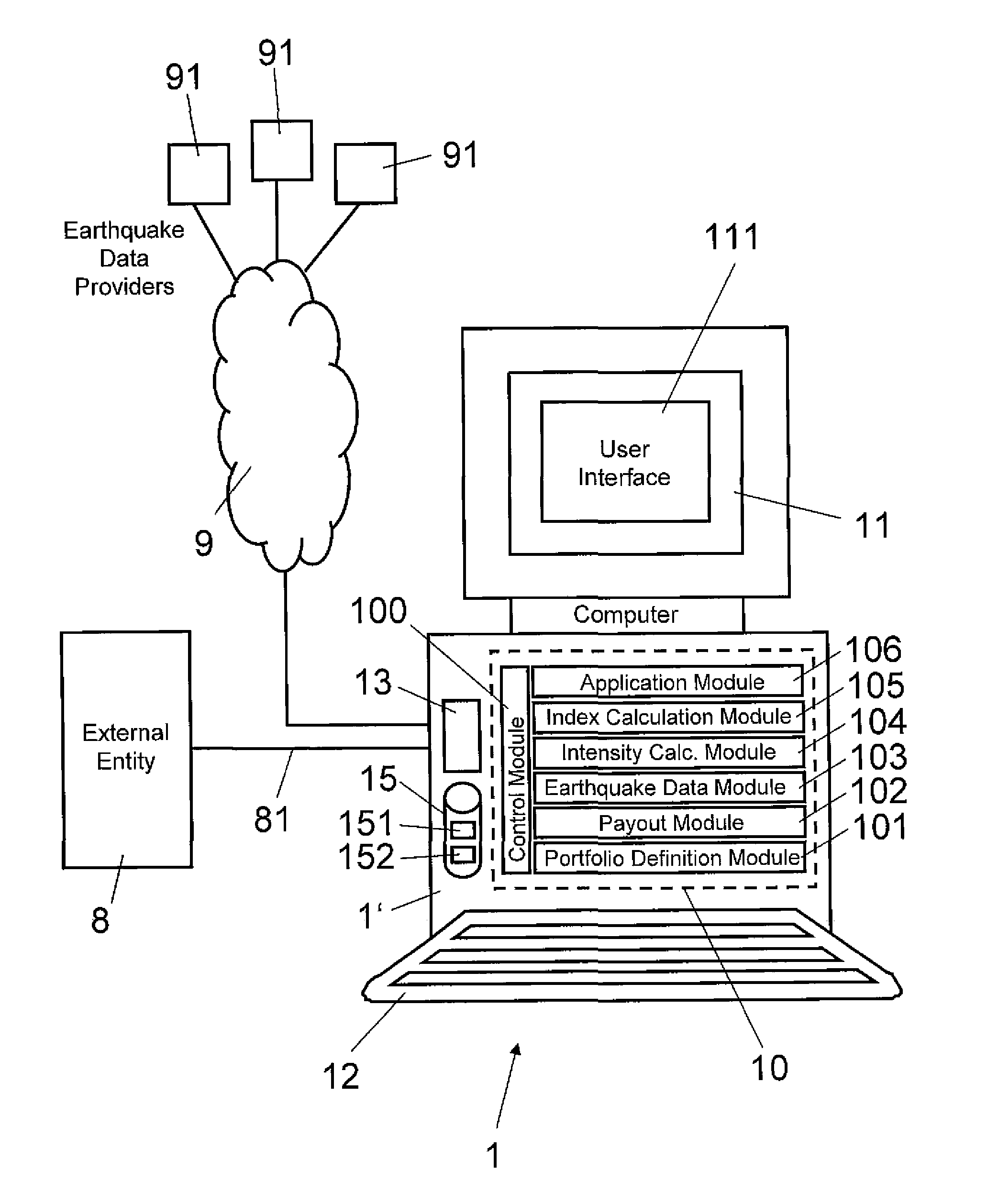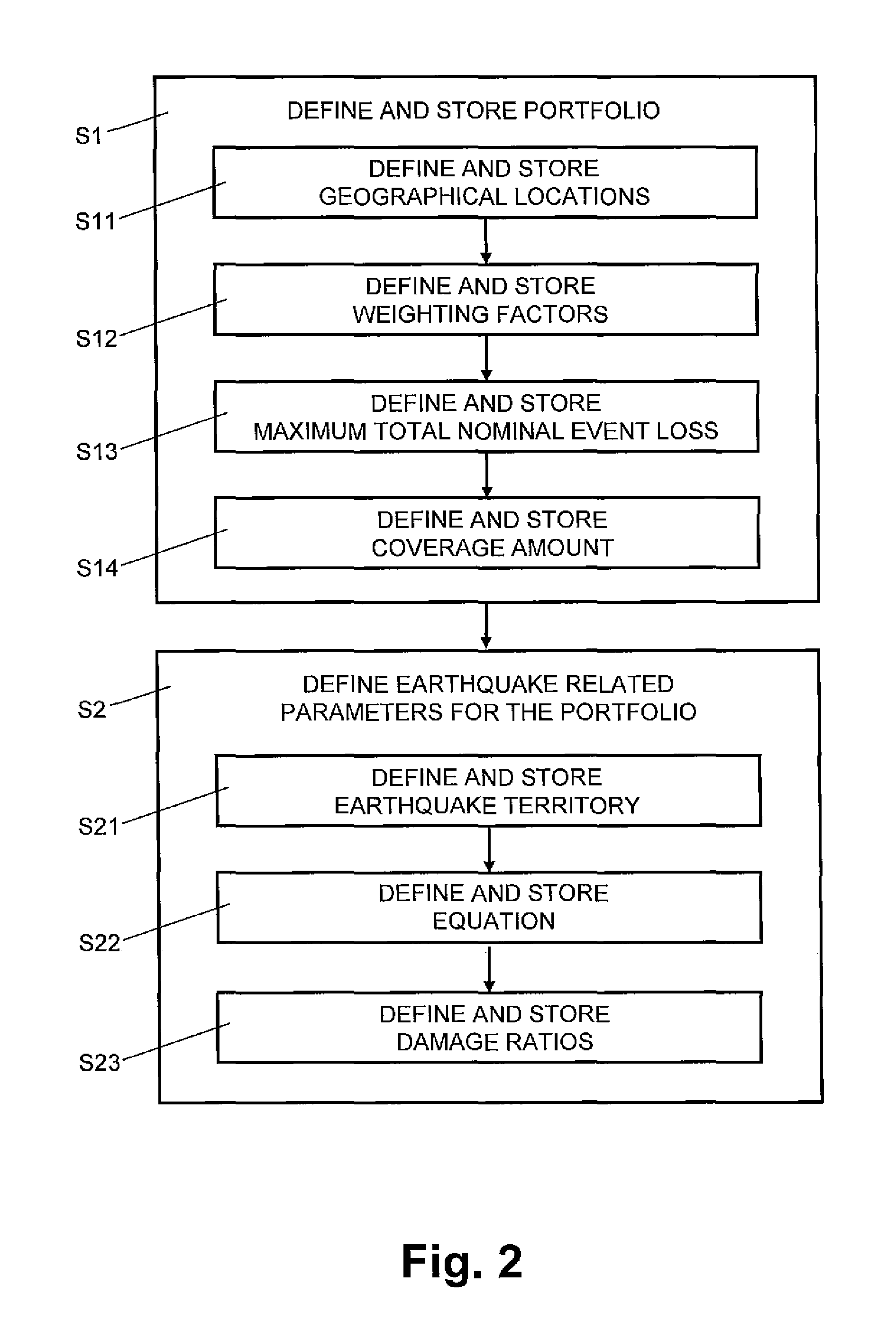Earthquake damage prediction and prevention system and method thereof
a technology applied in the field of earthquake damage prediction and prevention system, can solve the problems of not considering the portfolio and its geographical distribution of objects, unable to make scientifically reproducible predictions to a specific hour, day, or month, and the correlation between earthquake impact index and real damage caused to assets is poor, and achieves full transparency
- Summary
- Abstract
- Description
- Claims
- Application Information
AI Technical Summary
Benefits of technology
Problems solved by technology
Method used
Image
Examples
Embodiment Construction
[0027]In FIG. 1, reference numeral 1 refers to an earthquake damage prediction and prevention system for determining an impact index indicative of the impact or damage caused by an earthquake to an object or a portfolio of values or objects associated with geographical locations. For example, the portfolio can relate to objects or values of property or non-property nature, e.g. non-physical values such as business interruptions, contingent business interruption values or exposed population. As is illustrated in FIG. 1, the system 1 includes a processor means 1′ (e.g. a computer), connected to a display 11 and to data entry means 12 such as a keyboard and / or a pointing device. The computer 1′ is provided with one or more processors and is implemented as a personal computer, for example.
[0028]In FIG. 1, reference numeral 10 refers to functional modules of the earthquake damage prediction and prevention system 1: a control module 100, a portfolio definition module 101, a payout module ...
PUM
 Login to View More
Login to View More Abstract
Description
Claims
Application Information
 Login to View More
Login to View More - R&D
- Intellectual Property
- Life Sciences
- Materials
- Tech Scout
- Unparalleled Data Quality
- Higher Quality Content
- 60% Fewer Hallucinations
Browse by: Latest US Patents, China's latest patents, Technical Efficacy Thesaurus, Application Domain, Technology Topic, Popular Technical Reports.
© 2025 PatSnap. All rights reserved.Legal|Privacy policy|Modern Slavery Act Transparency Statement|Sitemap|About US| Contact US: help@patsnap.com



